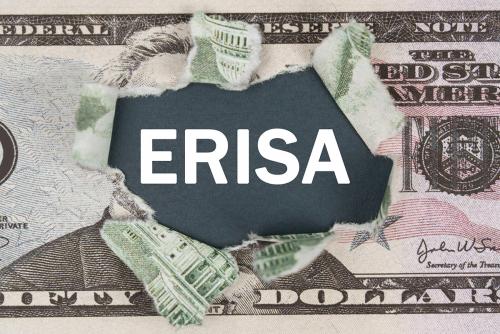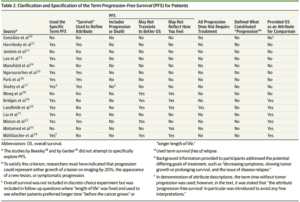ERISA Health Plan Transparency and Fiduciary Committees – The National Law Review

The Consolidated Appropriations Act, 2021 (the “Act”) adopted a series of transparency requirements that apply to employer-sponsored group health plans. These transparency rules impose a series of new and complex obligations on plan fiduciaries that mirror the rules that have governed retirement plan fiduciaries for the last decade. While both pension and welfare plans are subject to ERISA’s fiduciary standards, fiduciary committees, which are common in the case of retirement plans, are far less common where welfare plans are concerned. The new law provides compelling reasons for this to change.
Background
In response to the steady rise in class action and other lawsuits against 401(k) and other retirement plan fiduciaries, as well as the regulatory developments affecting plan administration, plan sponsors have sought to identify and adopt best-in-class plan governance practices and procedures. They have come to rely on fiduciary committees to handle or oversee plan administration. An emerging body of case law supports the notion that properly organized and operated retirement plan fiduciary committees can play an important role in ensuring faithful adherence to ERISA’s fiduciary standards, thereby reducing exposure to claims for fiduciary breach.
While the ERISA fiduciary standards apply to both pension and welfare plans, fiduciary compliance relating to welfare plans, including group health plans, is often an afterthought. Broadly speaking, welfare benefit plans, programs and arrangements are of two broad types: fully insured and self-funded. The former, fully insured arrangements, take the form of regulated insurance products offered for sale by licensed insurance companies on which plan sponsors generally rely for all aspects of plan administration; the latter, self-funded plans, are in most cases operated by third party administrators or consulting firms, on which plan sponsors also generally rely. Despite that, welfare plan sponsors generally retain full fiduciary responsibility for their welfare plans (except where the adjudication of certain medical, life and disability claims has been delegated to a fiduciary claims administrator). This retained fiduciary responsibility is too often misunderstood and unappreciated.
Division BB of the Act broadly addresses surprise medical billing and health plan transparency for group health plans. While the Act’s provisions curbing surprise medical bills have grabbed much of the media’s attention, the Act’s dozen or so transparency provisions have the power to transform group health plan maintenance. Each of the Act’s new requirements apply to group health plans and carriers. Particularly in the case of self-funded group health plans, these transparency requirements are such that plan sponsors will need to rely heavily, if not exclusively, on non-fiduciary service providers to comply. Complicating matters further, these new transparency rules are for the most part granular and prescriptive, which means there is no shortage of opportunities to make mistakes.
It will not take long for the plaintiffs’ bar to connect the proverbial dots. Private health insurance health care spending exceeds $1 trillion annually, and employer-sponsored group health plans cover some 179 million Americans (about fifty-five percent (55%) of the country’s total population). The complexity of the Act’s new transparency rules ensures that there will be violations. The parallels to the world and trajectory of 401(k) plan litigation are unmistakable. The Act offers a big, new, juicy target: fiduciary breach claims against group health plan fiduciaries and plan sponsors based on the failure to properly select, oversee, and compensate service providers.
Division BB of the Act
Despite that Title I, Sections 101-118, of Division BB of the Act (titled the No Surprises Act) deals principally with surprise medical billing, it also contains transparency measures. These measures include rules addressing continuity of care, improving the accuracy of provider directory information, establishing a price comparison tool, and requiring state-based, all payer claims databases. Title II, Sections 201-204, of Division BB of the Act is formally titled Transparency. It includes rules barring gag clauses in provider contracts, requiring disclosure of direct and indirect broker and consultant compensation, strengthening parity in mental health and substance use disorder benefits, and reporting on pharmacy benefits and drug costs, among others.
Each of the Division BB transparency provisions is set out in an amendment to the Public Health Service Act and in parallel amendments to ERISA and the Internal Revenue Code, and each imposes obligations on group health plans (including grandfathered plans) and health insurance issuers. Absent a proper delegation of authority, the default governing body—the “plan administrator”— of an ERISA-governed plan is the plan sponsor’s directors, partners or managers, or sole proprietor, as the case may be. In this context, one can easily see how these individuals become potential defendants or targets.
Division BB of the Act has about a dozen provisions that relate to health plan transparency provisions ranging from the relatively trivial (e.g., prescribing what information must appear on insurance ID cards) to the substantive (e.g., requiring the maintenance of a web-based price comparison tool). Others are harder to calibrate (e.g., a directive to issue regulations under the ACA rules governing provider non-discrimination). For purposes of this post, the most important are the rules that require brokers and consultants to disclose their compensation to plan fiduciaries.
What this Means for Claimants
One need not spend a lot of time studying the list of Division BB transparency requirements described above to discern at least the broad contours of the problem: each of the Division BB transparency requirements is highly prescriptive. There is a lot that can go wrong. In addition, items such as the price transparency tool and advanced explanations of benefits (“EOBs”) will require the development of a fresh technology infrastructure. Others, such as the provider non-discrimination rule, invite plaintiffs to re-litigate the entire scope of the provision. This is not an academic exercise. There is a great deal at stake as providers of all stripes seek to be included in provider panels. (We describe the stakes in a previous post available here.).
A subset of these transparency requirements, while not likely well suited to class action claims, will nonetheless prove vexing. Provisions governing cost estimates and continuity of care are in this category. In contrast, provisions relating to mental health parity seem perfectly designed to attract class actions claims. This is all the more worrisome based on the difficulty that plan sponsors and their providers have encountered in complying with the rules governing non-quantitative treatment limitations imposed under the Mental Health Parity and Addiction Equity Act of 2008 (“MHPAEA”). Complicating matters is the comparative analysis under MHPAEA required by Section 203 of Division BB, which, as interpreted by the Departments of Labor and Health & Human Services, is complex and burdensome.
The motherlode for the plaintiffs’ bar however is in the broker/consultant compensation disclosure rules. For starters, there is the obvious claim that the rule was not properly followed, thereby triggering a prohibited transaction. Equally obvious and even more worrisome, however, are claims that are right out of the 401(k) litigation playbook: the plan paid excessive fees and plan fiduciaries were not paying attention. Essentially, the statute’s focus on fee disclosure invites scrutiny of the underlying fees and the accompanying fiduciary engagement.
Ligation involving the Act’s broker/consultant compensation disclosure rules could go a long way toward reshaping how these individuals and firms are compensated. In Field Assistance Bulletin 2021-03, the Department of Labor encourages brokers and consultants to look to the 2012 pension disclosure rules for guidance. A consequence of the final pension disclosure rule was to move away from asset-based fees and commissions on the theory that an increase in assets will not likely result in a corresponding increase in the amount of compensable work. The same could prove true in the case of broker compensation relating to group health plans.
What this Means for Employers
Employers can best insulate themselves from exposure to claims based on fiduciary breaches under their welfare plans by following the 401(k) plan example. At bottom, this calls for the adoption of prudent policies and procedures and the demonstration of robust, ongoing fiduciary compliance. The establishment of a welfare plan fiduciary committee is a terrific place to start.
©1994-2022 Mintz, Levin, Cohn, Ferris, Glovsky and Popeo, P.C. All Rights Reserved.National Law Review, Volume XII, Number 66




